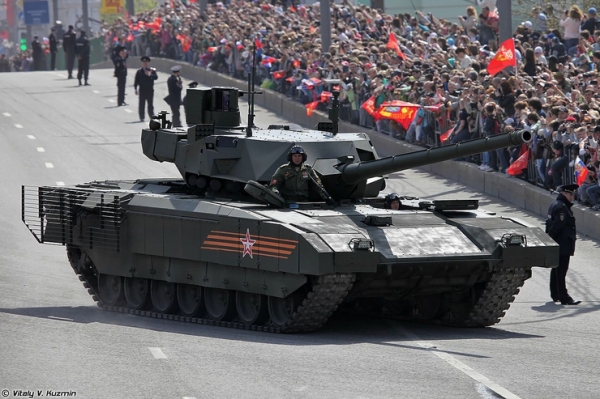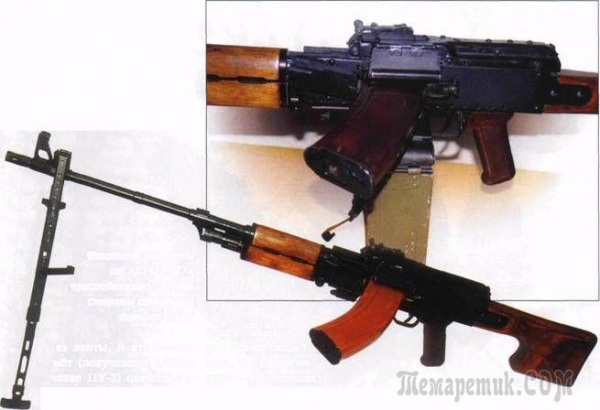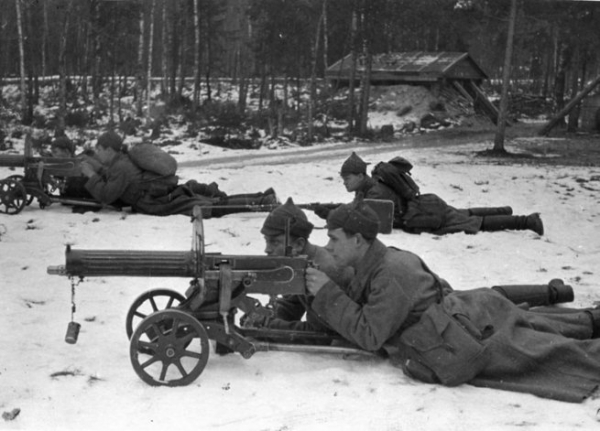
Work on heavy armored offensive machine was carried out before the First world war all parties of future conflict, however, most of the projects were rejected as unsuitable by the military in real combat conditions.
However, a prominent Russian military theorist General-field Marshal Milyutin in 1912 prophetically wrote that “the car more and more will take precedence over the human muscle force. <…> Instead of the field guns with a horse, harness and enter the contest on the battlefield mobile armored battery, and the land battle be like the battle of the sea.” Among prototokos, developed in Russia, was at least two stood out for originality and unusual design of the sample.
Bronekhod engineer-shipbuilder Vasily Mendeleev (son of the great chemist), in fact, was the first sketch of a superheavy tank: 170-tonne tracked armored vehicle is almost 13 metres long, armed with a naval 120mm gun. Bronekhod, or Mendeleev tank, as he is known in the historical literature, and has not been implemented in the metal: the estimated cost of the instance were comparable to the costs of the construction of a combat submarine.

However, given that “the Bronekhod” Mendeleev began in 1911, the name of the Russian engineer, who died of typhoid at age 36 during the Civil war, is deservedly included in the list of pioneers of the tank case. But the “Tsar tank” engineer Lebedenko was built and tested — albeit with disappointing results.
Machine Lebedenko (the word “tank” at the time of construction of the prototype was not used in the modern sense) was in fact a huge gun carriage with wheels, almost 9 meter in diameter. Platform width of 12 meters was equipped with sponsons with guns, and provided the opportunity for artillery weapons.
Money for the project (more than 200 thousand rubles — a lot at the time) has allocated from personal funds of the Emperor Nicholas II, and in the work on the car, except for the Lebedenko, was attended by the great Russian scientist, the founder of aerodynamics N. E. Zhukovsky and his young officers, who later became a famous Soviet designers of aircraft engines Boris Stechkin and Alexander Mikulin.
According to the plan Lebedenko giant wheel was easily overcome barbed wire and trenches. Alas, on the first tests it became clear that although the front wheels do the “broken birch as matches”, according to eyewitnesses, but the rear steering a pair of small diameter mired in sandy soil. Pulling the “Tsar tank” could not even its powerful powerplant of two taken from the downed German airship 240-horsepower engines “Maybach”.

Machine and left to stand neglected, in a forest near Moscow, until in 1923 was disassembled for scrap.
The Englishman-sage
Armored tracked vehicles before the First world war it started and developed in Russia, and in France, and in Austria-Hungary, and even in remote Australia (then a British dominion), but the first English. In early 1915, when it became apparent that the war took a protracted position and nature of any offensive operations will inevitably be associated with high losses of manpower, at the initiative of the first Lord of the Admiralty Winston Churchill, a Committee was formed for land vehicles, engaged in exploring the creation of tracked armored vehicles with machine-gun and artillery weapons. The usual wheeled armored vehicles are already well proven on the front, however, the military was dissatisfied with how weak security and insufficient maneuverability of armored vehicles.
After a series of experiments it was decided to begin the manufacture of machinery design engineers Tritton and Wilson — with a diamond-shaped body and covering his tracks (to improve permeability). Armament was located in the side sponsons, as the rotating tower planned originally, would have made the tank too unstable.

For better handling in the rear of the tank (sea terminology and not gone from this area of military Affairs so far) were two small wheels; however, during the fighting it became clear that the loss of the pair of wheels does not affect driving performance, it was abandoned. Soon, the industry has received an order for 100 military vehicles Mk I, produced in two versions: “male” with four machine guns and two 57-mm guns and only armed with five machine guns “female”.
The modern division into compartments in the first tanks was not yet, the propulsion unit with the transmission occupied almost all the internal space, the exhaust gases penetrated into the body — along with the heat, shaking and distress it created for the crew almost hellish conditions. Moreover, the speed of the Mk I was no different: the most that he was capable of 6.4 km/h, and on the highway. On rough terrain the first tanks moved slower pedestrians; however, since they were to be used for fire support of infantry, this was fine military. The British command decided that the machine can take part in the fighting — and no mistake.
The name “tank” was born out of considerations of secrecy. Even working machine factory William Foster in Lincoln didn’t know exactly what they collect — they said the strange structures are “mobile tanks (tanks) for water (mobile water tanks) and is intended for military operations in Mesopotamia.
Ironically, what was originally considered variant names water container (water container), but against it was unanimous the members of the Committee — they did not want to go down in history as “the Committee WC” (common in English-speaking countries already the name of a toilet). To finally confuse German intelligence, before being sent to the front on the hull of the tank was caused by the Cyrillic inscription “beware of Petrograd and disbanded the rumor that it is a snow tractor shipped to Russia.
At 5:30 am on 15 September 1916 by “the Heavy part of the machine-gun corps, as it was named the first armored division joined the battle. The German trenches was panicking: despite the fact that of the 49 British tanks went into battle only 32 (for data series 35, but the difference is insignificant), of which five got stuck in a bog, and nine dropped out of the service for technical reasons, the defense was broken and the British were able to move to 5 km with minimal losses.
The village of Flers and Quedancor was seized with a stroke. According to the Newspapers of the time, the crew of one of the tanks was forced to surrender three hundred “jerries”. The battle lasted until 10 am. History has preserved the name of the commander of the first picks in a battle tank with number D1 — it was the captain of the Royal Navy Mortimore.
And for the crew of the tank, which was seen from the trenches Bert Cheney, the first tank attack ended completely in English: “Four people got out of the stalled tank. <…> After standing a few minutes with a stumped, they got out of the tank Primus and using the side of the machine as protection from enemy fire, sat on the ground and made himself tea.”








